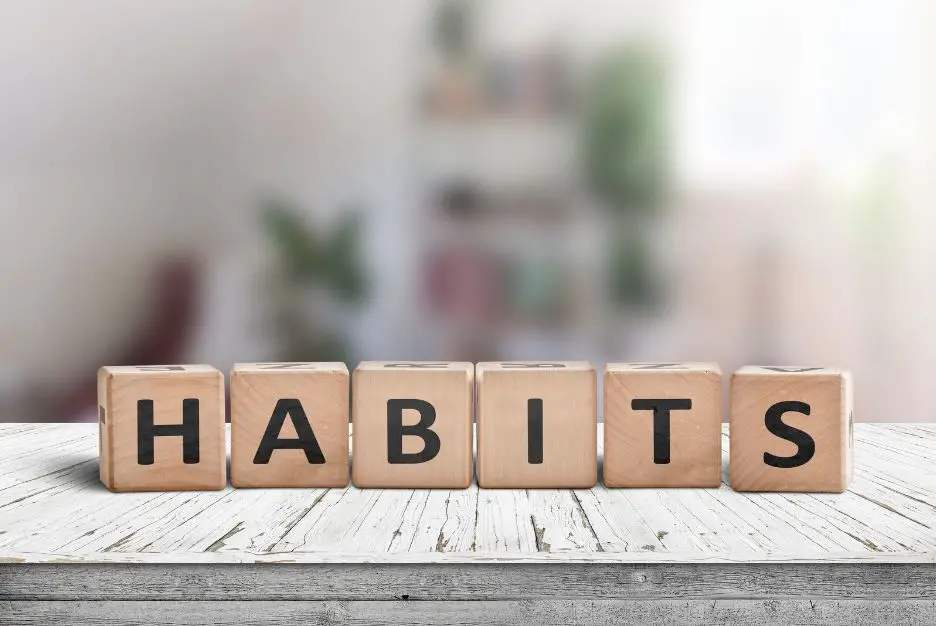In this age of instant communication, it’s easy to get caught up in the constant flow of texting.
Table of Contents
And when it comes to romantic relationships, we often feel compelled to keep our partners updated on every detail of our lives.
But how much is too much? How often should you text your partner?
As a relationship therapist, I’ve seen firsthand the impact that texting can have on a couple’s dynamic.
On one hand, frequent messages can foster intimacy and connection; but on the other hand, excessive texting can lead to burnout and feelings of suffocation.
In this article, we’ll explore some guidelines for finding the sweet spot between staying connected and giving each other space – so that you can build a healthy, sustainable partnership with open lines of communication.
Summary
- The article explores the impact of texting on romantic relationships, highlighting the fine line between fostering intimacy and suffocating a partner.
- It emphasizes the significance of active listening, nonverbal cues, and choosing the right communication medium for building healthy relationships.
- Setting boundaries for texting is crucial to avoid misunderstandings and maintain a balance between staying connected and personal space.
- Individuals should assess their own texting habits and manage potential burnout by recognizing signs, setting boundaries, taking breaks, and communicating openly with their partner.
- The article suggests creating a texting schedule that works for both partners and explores alternatives to texting, such as video calls and surprise gestures, to enhance intimacy and connection.
The Importance Of Communication In Relationships
Communication is the foundation of every successful relationship.
It’s not just about talking and exchanging information, but also actively listening to your partner.
Active listening involves being present in the moment, paying attention to their words, tone of voice, and nonverbal cues.

Nonverbal cues like facial expressions, body language, and eye contact can convey a lot more than words alone.
It’s important to pay attention to these cues as they often reveal what our partners are really feeling or thinking.
By acknowledging and responding appropriately to these nonverbal signals, we show that we care about our partner’s feelings and opinions.
Choosing the right communication medium is also crucial in maintaining healthy relationships.
Whether it’s face-to-face conversations, phone calls, texts or emails – each medium has its own unique advantages and disadvantages.
Knowing when to use which mode of communication can help you avoid misunderstandings and foster deeper connections with your partner.
Additionally, expressing emotions effectively is key to building intimacy in any relationship.
Being honest and vulnerable about how you feel can deepen trust between partners while fostering greater understanding and empathy towards one another.
Remember that effective communication goes beyond the mere exchange of information; it requires active engagement from both parties involved.
By practicing active listening skills, interpreting nonverbal cues correctly, choosing appropriate mediums for different situations, and expressing emotions openly – couples can establish deeper connections with each other resulting in long-lasting bonds built on mutual respect, love, and trust without ever having to say ‘finally’.
Understanding Your Partner’s Communication Style
Understanding your partner’s communication style is essential for a healthy relationship.
Communication preferences vary from person to person, and it is crucial to understand how your partner prefers to communicate.
Some people prefer frequent texting throughout the day, while others may only want to talk at specific times.
Emotional responsiveness also plays an important role in communication styles.
Some individuals are more emotionally responsive than others, meaning they need more validation and reassurance through words and gestures.
It is crucial to recognize these differences in emotional responsiveness so that you can better meet your partner’s needs.
It’s essential to have open and honest conversations about communication preferences with your partner.
Discussing what works best for both of you will help avoid misunderstandings or hurt feelings down the line.
Remember, relationships require effort, and understanding each other’s communication style is one way to show your commitment to building a strong foundation together.
Setting Boundaries For Texting
Are you struggling to set boundaries for texting with your partner?
Texting frequency can be a source of tension in relationships, as people have different expectations and needs when it comes to communication.

It’s important to establish digital boundaries that work for both partners in order to avoid misunderstandings and hurt feelings.
One way to approach this is by having an open conversation about each other’s texting habits and preferences.
Ask questions like “How often do you like to text during the day?” or “Do you prefer quick check-ins throughout the day or longer conversations at night?”
This will give you a better understanding of what your partner expects from you and vice versa.
Once you’ve established some basic guidelines, stick to them! If one person starts texting more frequently than agreed upon, gently remind them of the boundaries you’ve set.
Remember, healthy relationships require mutual respect and compromise.
By respecting each other’s need for space and time away from screens, you’ll build trust and intimacy in your relationship without feeling suffocated or overwhelmed.
In the end, finding the right balance between texting frequency and digital boundaries requires ongoing communication and flexibility.
Don’t be afraid to adjust your approach if something isn’t working – after all, every relationship is unique!
By staying mindful of each other’s needs and priorities, you can create a texting routine that strengthens your connection rather than causing stress or anxiety.
Assessing Your Own Texting Habits
Reflecting on frequency is an essential step in assessing your own texting habits.
It’s crucial to consider how often you’re communicating with your partner and whether it aligns with their expectations.
If you find yourself constantly checking your phone for new messages or feeling anxious when they don’t respond immediately, it may be a sign that you need to reevaluate your behavior.

Managing distractions also plays a significant role in maintaining healthy texting habits.
It’s easy to get caught up in other activities while messaging your partner, which can lead to delayed responses or misunderstandings.
To avoid these issues, try setting aside dedicated time for texting where you can focus solely on the conversation without any interruptions.
Ultimately, finding a balance between over-texting and under-texting comes down to communication and understanding each other’s needs.
Take the time to have an open and honest discussion with your partner about what works best for both of you.
By being mindful of your texting habits and actively working towards creating a mutually satisfying relationship dynamic, you’ll be able to build stronger intimacy and connection with your partner.
Remember that every relationship is unique, so there isn’t a one-size-fits-all answer when it comes to how often you should text your partner.
Instead, focus on developing healthy communication practices that work for both parties involved.
With consistent effort and attention, you can cultivate a strong bond through texting that complements all aspects of your relationship.
Recognizing Signs Of Texting Burnout
As we discussed in the previous section, it’s important to assess your own texting habits before determining how often you should text your partner.
However, even if you’ve determined a healthy frequency for communication with your significant other, it’s still possible to experience burnout from constantly being connected.
Recognizing signs of texting burnout can help you manage stress and maintain a healthy relationship.
Some common symptoms include feeling anxious or overwhelmed when receiving messages, feeling pressure to respond quickly, and experiencing irritability or fatigue after extended periods of texting.
If you identify with any of these symptoms, it may be time to take a step back and evaluate your overall approach to communication with your partner.
Here are three ways you can manage texting burnout:
- Set boundaries – establish designated times during the day for checking and responding to texts.
- Take breaks – disconnecting from technology altogether can provide much-needed relief and perspective.
- Communicate openly – talk with your partner about how you’re both feeling regarding communication expectations and work together on finding a solution that works for both of you.
Remember, maintaining a healthy balance between digital connection and personal space is key to sustaining a strong relationship over time.
By recognizing burnout early on and taking proactive measures to manage stress, you’ll be better equipped to communicate effectively with your partner and build intimacy in meaningful ways.
Creating A Texting Schedule That Works For You
When it comes to texting your partner, there’s no one-size-fits-all answer.
While some couples may enjoy constant communication throughout the day, others may prefer more space and less screen time.

The key is finding a texting routine that works for both of you.
To create a texting schedule, start by discussing each other’s preferences and expectations.
Some questions to consider include: Do you want to text daily or only on certain days?
How frequently do you want to check in with each other? Are there specific times of day when you’re unavailable?
Once you’ve established a basic framework, create a simple table like the one below to keep track of your agreed-upon schedule.
| Day | Partner A Check-in Time | Partner B Response Time |
|---|---|---|
| Monday | 9 am | 1 pm |
| Tuesday | 6 pm | 8 pm |
| Wednesday | No check-ins scheduled | No responses required |
| Thursday | 2 pm | 4 pm |
By setting clear boundaries and expectations, you can avoid texting pitfalls such as miscommunication or feeling suffocated by constant messaging.
However, remember that life happens and plans may need to be adjusted from time to time.
Flexibility and understanding are important aspects of any healthy relationship.
Ultimately, creating a texting routine should enhance your connection rather than detract from it.
By taking the time to communicate openly with your partner and establish an agreed-upon schedule that respects both parties’ needs, you’ll find yourself looking forward to those check-ins rather than dreading them.
So go ahead – grab your phone and start crafting that perfect message!
Alternatives To Texting For Staying Connected
Creating a texting schedule that works for you and your partner is an important step toward maintaining a healthy relationship.
However, it’s also essential to remember that texting isn’t the only way to stay connected.
In fact, sometimes relying too heavily on texting can actually hinder intimacy and communication.
That’s why it’s worth exploring alternative methods of staying in touch.
One such method could be video calls.
Video calls are a great way to add some face-to-face interaction even if you’re physically apart from each other.
This allows for more meaningful conversations and fosters deeper emotional connections between partners.
It may take some getting used to at first, but incorporating regular video calls into your routine can make all the difference in keeping your relationship strong.
Another option is surprising your partner with small gifts or gestures of affection.
These don’t have to be grand gestures; something as simple as leaving them a sweet note or sending them their favorite snack can go a long way in making them feel loved and appreciated.
Surprise gifts show that you’re thinking about your partner even when you’re not together, which helps keep the spark alive in your relationship.
Remember, there’s no one-size-fits-all approach when it comes to relationships.
What works best for one couple might not work for another.
The key is finding what makes both parties happy and fulfilled while nurturing intimacy and connection over time.
Incorporating alternatives like video calls and surprise gifts alongside regular communication through texting can help keep things fresh and exciting in your relationship!
Addressing Communication Issues With Your Partner
Improving clarity and reducing misunderstandings are two crucial components of a healthy relationship.
Communication issues can arise between partners, leading to frustration and confusion if not addressed properly.
As a relationship counselor or therapist, it’s essential to work with couples on improving their communication skills for the betterment of their relationship.
When addressing communication issues with your partner, one key aspect is understanding each other’s expectations.
This includes how often you text or communicate throughout the day and what kind of response time is expected.
By discussing these expectations openly and honestly, you can avoid potential misunderstandings that could lead to hurt feelings or resentment.
Another critical component of effective communication in relationships is active listening.
It involves paying attention to what your partner says without interrupting or judging them.
Encourage your partner to express themselves freely while actively listening to understand their perspective fully.
When both partners listen attentively and communicate clearly, they can reduce misunderstandings and build stronger emotional connections.
- Sub-lists
- List all the ways improved communication has helped strengthen relationships.
- Share anecdotes about past clients who were able to overcome significant communication barriers.
- Provide actionable advice for couples struggling with communicating effectively.
By working together as a team, couples can address any communication issues they may be facing in their relationship.
Remember that open and honest dialogue is key to building trust and intimacy between partners.
With practice and patience, you can improve your communication skills and enjoy a happier, healthier relationship filled with mutual respect and understanding.
Balancing Intimacy And Independence
Maintaining a healthy balance between intimacy and independence is key to any successful relationship.
It’s important to remember that you are two individuals in a partnership, each with your own needs for personal space and alone time.
In order to maintain personal space, it’s essential to set boundaries within the relationship.
This means communicating openly and honestly about what you need in terms of physical and emotional distance.
It may be helpful to schedule regular times apart, whether it’s spending an evening with friends or pursuing individual hobbies.
Finding alone time can also help foster a greater sense of independence within the relationship.
This could mean taking a solo vacation or simply enjoying some downtime at home without your partner.
By nurturing your own interests and passions outside of the relationship, you’ll not only feel more fulfilled as an individual but also bring new energy into your partnership.
Remember, finding balance is an ongoing process that requires communication, compromise, and self-awareness.
With patience and dedication, you can create a strong foundation of both intimacy and independence in your relationship that will stand the test of time.
Tips For Healthy Texting In A Relationship
Now that we’ve discussed the importance of balancing intimacy and independence in a relationship, let’s dive into one aspect of staying connected with your partner: texting.
Texting frequency can vary greatly from couple to couple, but it’s important to find a middle ground that works for both parties.
Some couples prefer constant communication throughout the day while others prefer occasional check-ins or updates.
It’s crucial to have an open discussion with your partner about what feels comfortable for each of you.
When it comes to texting, tone and language are also incredibly important.
The way we communicate through text can easily be misinterpreted without context clues like body language or tone of voice.
Therefore, it’s important to choose our words carefully and consider how they may come across to our partner.
Avoid using accusatory language or making assumptions about their thoughts or actions.
Instead, focus on expressing yourself clearly and respectfully.
In addition to being mindful of how often we text and the way we communicate through messages, there are a few tips for healthy texting in a relationship.
First, try not to rely solely on texting as your main form of communication.
Make time for phone calls or face-to-face interactions whenever possible.
Secondly, don’t use texting as a replacement for resolving conflicts in person.
If something is bothering you, bring it up when you’re together so you can work towards a solution together.
And finally, remember that it’s okay if your texting styles differ from your partner’s – just make sure you’re both willing to compromise and find common ground.
Conclusion: Finding The Right Balance For Your Relationship
Finding a middle ground when it comes to texting frequency is crucial in any relationship.
Some individuals may prefer constant communication, while others need more space and time to themselves.
It’s important to respect each other’s individual needs without compromising your own.
One way to find a balance is by discussing expectations with your partner early on in the relationship.
This way, you can establish boundaries and understand what works for both of you.
If there are differences in preferences, compromise may be necessary.
Another approach is to prioritize quality over quantity.
Instead of bombarding your partner with texts throughout the day, make sure that they are meaningful and thoughtful.
This not only shows that you care but also allows for deeper connections between partners.
Numeric list:
- Communicate openly and honestly about texting preferences.
- Respect each other’s individual needs and boundaries.
- Prioritize quality over quantity in text conversations.
- Be willing to compromise when finding a balance that works for both partners.
Ultimately, finding the right balance for texting frequency requires mutual understanding and respect for one another’s needs.
By communicating effectively and making an effort to prioritize intentional interactions, couples can strengthen their relationships through healthy communication habits without sacrificing personal autonomy or pushing their limits too far beyond the comfort levels established at the beginning stages of dating or courtship activities!
Conclusion
As a relationship therapist, I cannot stress enough the importance of communication in any relationship.
Texting is just one aspect of that communication, but it can be a powerful tool for maintaining intimacy and connection with your partner.
However, finding the right balance for your particular relationship requires some self-awareness and understanding of your partner’s needs.
Remember to set boundaries for texting and assess your own habits regularly to avoid burnout.
It’s also important to recognize signs that texting may not be working for you or your partner and address any issues together before they become bigger problems.
By balancing intimacy and independence through healthy texting practices, you can strengthen your relationship and deepen your emotional connection.